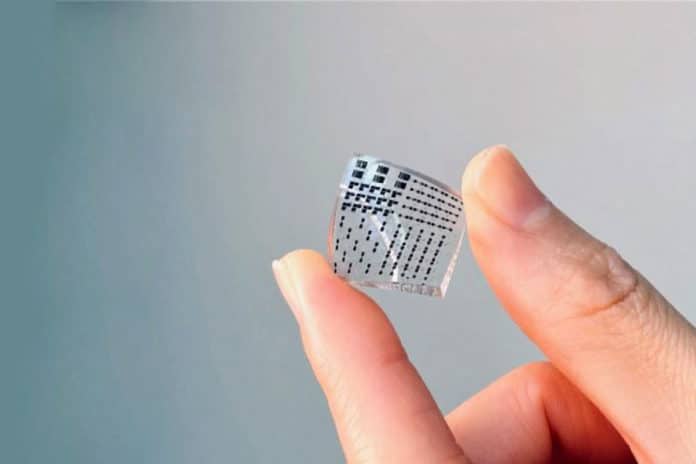A material that mimics human skin in strength, stretchability, and sensitivity could be used to collect biological data in real-time. Electronic skin, or e-skin, may play an important role in next-generation prosthetics, personalized medicine, soft robotics, and artificial intelligence.
Scientists at the King Abdullah University of Science & Technology (KAUST) have created a new “electronic skin” that they claim can mimic the many natural functions of human skin, such as sensing temperature and touch, accurately and in real-time. The durable e-skin is made of a hydrogel reinforced with silica nanoparticles as a strong and stretchy substrate and a 2D titanium carbide MXene as the sensing layer, bound together with highly conductive nanowires.
According to the researchers, their e-skin would be different from the rest, it’s because of the introduction of 2D sensors. “The landscape of skin electronics keeps shifting at a spectacular pace,” says KAUST postdoc Yichen Cai. “The emergence of 2D sensors has accelerated efforts to integrate these atomically thin, mechanically strong materials into functional, durable artificial skins.”
“Hydrogels are more than 70% water, making them very compatible with human skin tissues,” explains colleague Jie Shen. By pre-stretching the hydrogel in all directions, applying a layer of nanowires, and then carefully controlling its release, the researchers created conductive pathways to the sensor layer that remained intact even when the material was stretched to 28 times its original size.
During the tests, researchers found that their e-skin could sense objects from almost 8 inches (20 centimeters) away, respond to stimuli in less than one-tenth of a second, and when used as a pressure sensor, could distinguish handwriting written upon it. It continued to work well after 5,000 deformations, recovering in about a quarter of a second each time. “It is a striking achievement for an e-skin to maintain toughness after repeated use,” says Shen, “which mimics the elasticity and rapid recovery of human skin.“
According to the team, this type of e-skin could monitor a range of biological information, such as changes in blood pressure, which can be detected from vibrations in the arteries, and movements of large limbs and joints. This data can then be shared and stored on the cloud via Wi-Fi.
